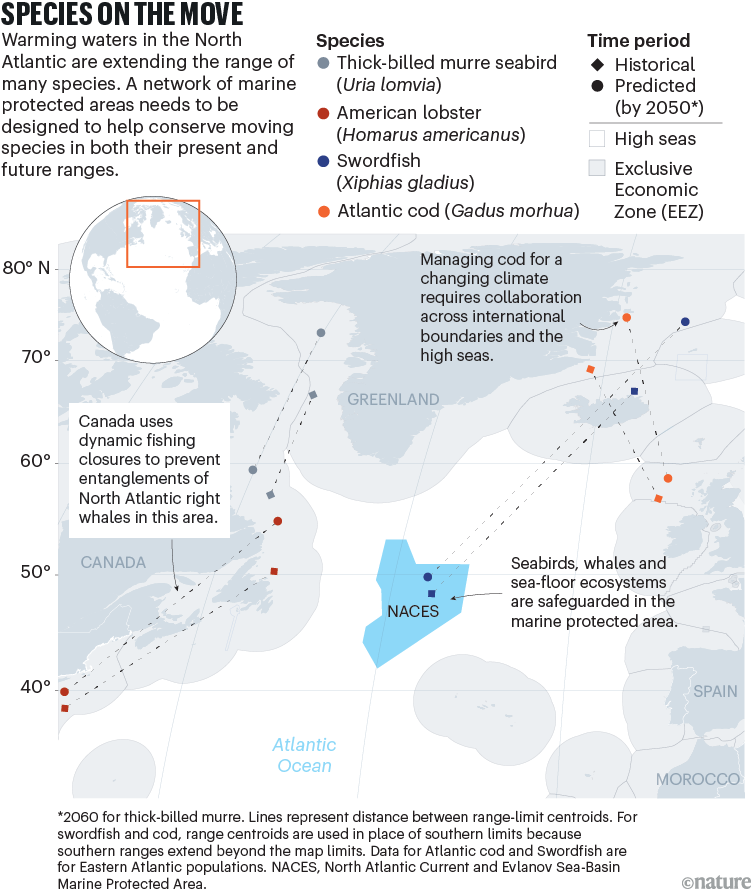
Corals frying in Florida, billions of snow crabs dead in the Arctic — climate change is wreaking havoc in the world’s oceans1,2. The race is on to protect marine areas amounting to 30% of global seas by 2030 under the Convention on Biological Diversity. Controlling uses of the high seas — waters that are beyond national control, comprising around two-thirds of the surface area of the planet’s oceans — is crucial, because there is currently no international policy mechanism for biodiversity conservation in these areas.
That is set to change in the next year, following the adoption in June 2023 of the High Seas Treaty, a new agreement that forms part of the United Nations Convention on the Law of the Sea. When it enters into force — probably in 2025, after 60 nations have ratified it — the treaty will enable implementation of new marine conservation tools in parts of the ocean […]










